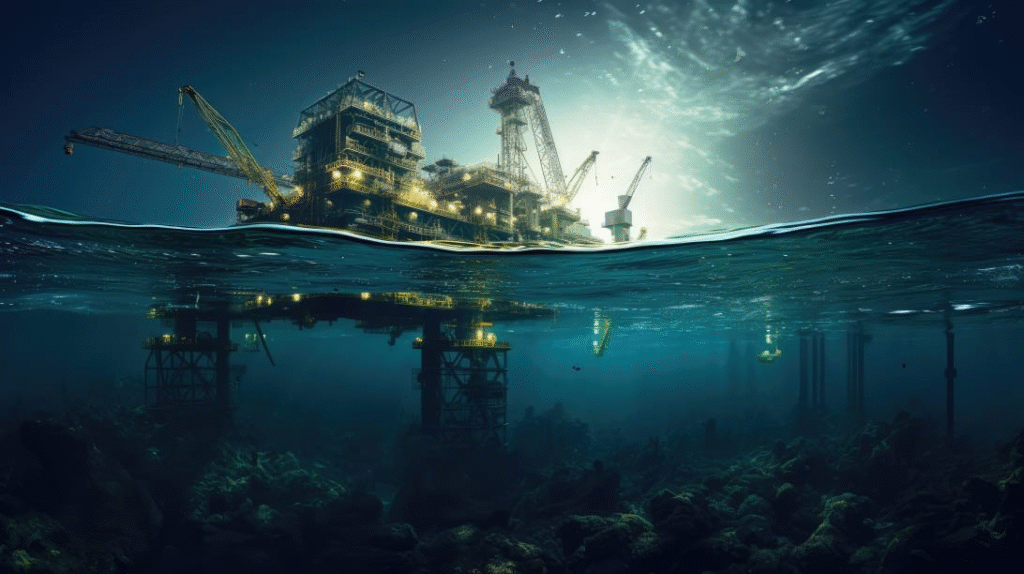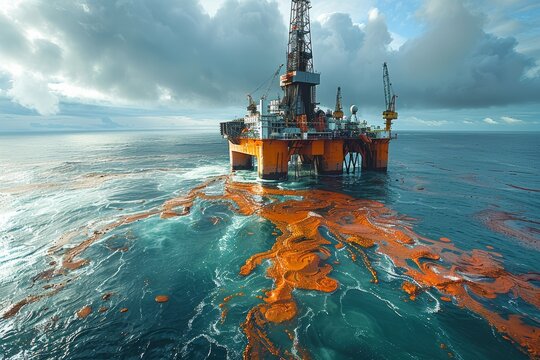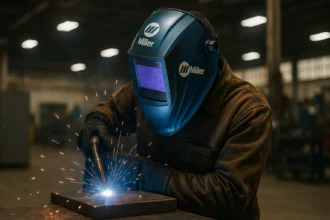introduction to deep offshore technology
Let’s be honest—deep offshore technology isn’t exactly the kind of topic you bring up at brunch. It sounds like something from an engineering conference or the kind of thing you only hear about when an oil spill makes the news. But once you peek into this world, it’s hard to look away. deep offshore technology
We’re talking massive floating oil platforms, robots crawling around the seafloor like mechanical spiders, and communication cables stretched across oceans. It’s a mix of science fiction, heavy industry, and wild ingenuity—playing out in one of the most extreme environments on Earth. deep offshore technology
If you’ve ever streamed a show, driven a car, or posted a selfie online, deep offshore technology probably played a role in making that happen. So let me share how I fell into this deep, dark rabbit hole—and why you might find it surprisingly fascinating too.
What Is Deep Offshore Technology?

In simple terms, deep offshore technology refers to the tools, systems, and engineering methods used to operate in deep ocean waters—typically anything deeper than 500 meters (about 1,640 feet). At those depths, sunlight doesn’t reach, the pressure is crushing, and humans can’t work without major technological support. deep offshore technology
This field includes:
Deepwater oil and gas extraction
Subsea robotics
Underwater data and power infrastructure
Deep-sea mineral mining
Floating renewable energy systems like offshore wind farms
Oceanographic research and exploration
So whether it’s drilling for oil in the Gulf of Mexico, installing wind turbines off the coast of Scotland, or laying fiber-optic cables between continents, deep offshore technology is what makes it all possible.
How I Got Hooked
It all started with a random late-night documentary about hydrothermal vents and deep-sea creatures. That turned into another show about offshore drilling platforms, which led to a video about underwater robots—and suddenly, I was deep into something I hadn’t thought twice about before. deep offshore technology
What hooked me wasn’t just the scale of these operations, but the creativity it takes to make them work. Engineers are building entire systems to survive in conditions where most machines would fail in minutes. And yet, we have robots doing precise tasks 3,000 meters underwater. It’s basically space exploration, but on Earth—and wet. deep offshore technology
The more I learned, the more I realized how much of our modern life depends on this invisible world at the bottom of the sea. deep offshore technology
The Backbone of the Deep: What This Technology Actually Involves
Let’s break it down into the major pieces that make deep offshore technology tick.
Floating Production Systems
Imagine a floating factory in the middle of the ocean. That’s essentially what these are. The most common type is the Floating Production Storage and Offloading unit, or FPSO. These giant vessels extract oil and gas from deepwater wells, process it onboard, and then store it until it can be transferred to tankers or pipelines.
They’re critical in areas without nearby infrastructure, like Brazil’s pre-salt fields or West Africa’s deepwater basins.
Remotely Operated Vehicles (ROVs)
These tethered underwater robots are the eyes and hands of deep-sea operations. Controlled from the surface, ROVs are used to inspect equipment, manipulate valves, cut through debris, and even perform underwater welding. deep offshore technology
Equipped with cameras, sensors, lights, and robotic arms, they’re the unsung heroes of subsea engineering. deep offshore technology
Autonomous Underwater Vehicles (AUVs)
Unlike ROVs, AUVs operate independently. They’re programmed to explore the ocean on their own—mapping the seafloor, scanning for leaks, or collecting data. They don’t need a tether and can travel long distances on a single mission, making them ideal for oceanographic research and pipeline inspection. deep offshore technology
Subsea Infrastructure
This includes everything from pipelines and valves to manifolds and blowout preventers. These systems are installed on the ocean floor and must function flawlessly under enormous pressure, freezing temperatures, and constant environmental stress.
Installing and maintaining subsea infrastructure is incredibly complex—and incredibly expensive. deep offshore technology
Undersea Cables and Offshore Renewables
Deep offshore technology isn’t just about oil and gas. The same principles are used to install the fiber-optic cables that carry over 95% of global internet traffic. Without them, international communication and cloud computing would be toast. deep offshore technology
More recently, we’ve started using offshore platforms to support renewable energy, particularly floating wind farms, which rely on deepwater mooring and dynamic power cables. deep offshore technology
Challenges of Working in Deep Water
Deepwater environments are among the most hostile places on Earth. Here’s why deep offshore engineering is so difficult—and why it commands such high stakes and costs. deep offshore technology
Pressure
At 1,000 meters below sea level, pressure is more than 100 times what it is at the surface. That’s the equivalent of having a stack of semi-trucks pressing down on every square inch of machinery. Every bolt, gasket, and valve has to be built to withstand it. deep offshore technology
Temperature
The deep ocean is just above freezing, even in tropical regions. This makes fluids more viscous, increases the risk of hydrate formation (basically ice-like blockages), and adds stress to equipment that needs to stay operational for decades. deep offshore technology
Corrosion and Fouling
Saltwater is brutally corrosive, and underwater structures attract marine growth like barnacles, algae, and crustaceans. All of this interferes with equipment and adds extra weight, which can throw off the balance of floating structures. deep offshore technology
Accessibility
Unlike surface platforms, deepwater facilities can’t be accessed by humans without major equipment. Any repair requires a specialized vessel, expert crew, and robotic systems. A simple maintenance task can cost millions of dollars and take weeks to plan. deep offshore technology
The Shift Toward Sustainability
Let’s be real: most deep offshore operations have historically centered on oil and gas. But the same technology is now being applied to green energy and scientific research in some pretty exciting ways. deep offshore technology
Floating Offshore Wind
Countries like Norway, the UK, and Japan are investing heavily in floating wind farms that can be anchored far offshore, where winds are stronger and more consistent. These floating platforms are adapted from oil and gas technology, with the same mooring systems, anchoring techniques, and subsea cables. deep offshore technology
It’s a perfect example of how fossil fuel infrastructure is evolving to serve a cleaner energy future.
Subsea Energy Storage
Engineers are exploring subsea battery systems to store energy from offshore wind and deliver it back to shore when needed. Some experimental designs even use compressed air or mechanical systems to store power on the ocean floor.
Climate Research
AUVs and ROVs are being used by scientists to explore the ocean’s role in climate change. These vehicles monitor currents, measure temperatures, and even sample carbon levels in the deep sea—all without disturbing fragile ecosystems.
Risks and Regulations
The deeper we go, the higher the risk. The Deepwater Horizon disaster in 2010 was a harsh reminder of how devastating a failure can be—not just in terms of human lives and environmental damage, but in public trust.
Since then, the industry has ramped up safety measures:
Redundant systems and fail-safes in blowout preventers
Real-time monitoring of well integrity and pressure
Stricter inspection protocols for subsea systems
At the same time, there’s growing concern over deep-sea mining, which could damage ecosystems we barely understand. Environmental oversight is improving, but many believe we’re still moving too fast without enough long-term data.
How You Can Learn More (Without Becoming an Engineer)
If you’re as curious about this world as I am, you don’t need to get a degree in marine engineering to explore it. Here are a few ways to dive deeper:
- Watch documentaries like “Mission Blue” or “The Deep” for an oceanic perspective on technology and conservation.
- Follow LinkedIn accounts or blogs from companies like Subsea 7, TechnipFMC, or Ocean Infinity. The behind-the-scenes videos are surprisingly cool.
- Google bathymetric maps to see what the ocean floor actually looks like. It’s wilder than you’d think.
- Check out academic resources like The Journal of Offshore Mechanics and Arctic Engineering—many have open-access articles.
Final Thoughts
Deep offshore technology is the invisible infrastructure behind much of our modern world. It’s how we explore, extract, connect, and power our lives—from thousands of meters below the sea. And now, it’s helping us pivot toward cleaner, more sustainable energy systems.
It’s not perfect. It’s expensive. It’s risky. But it’s also one of the most fascinating intersections of science, engineering, and imagination we’ve ever created.
So next time your phone call connects instantly across continents, or you see a wind turbine spinning on the horizon, think about what’s happening beneath the surface—and the incredible tech making it all possible.





